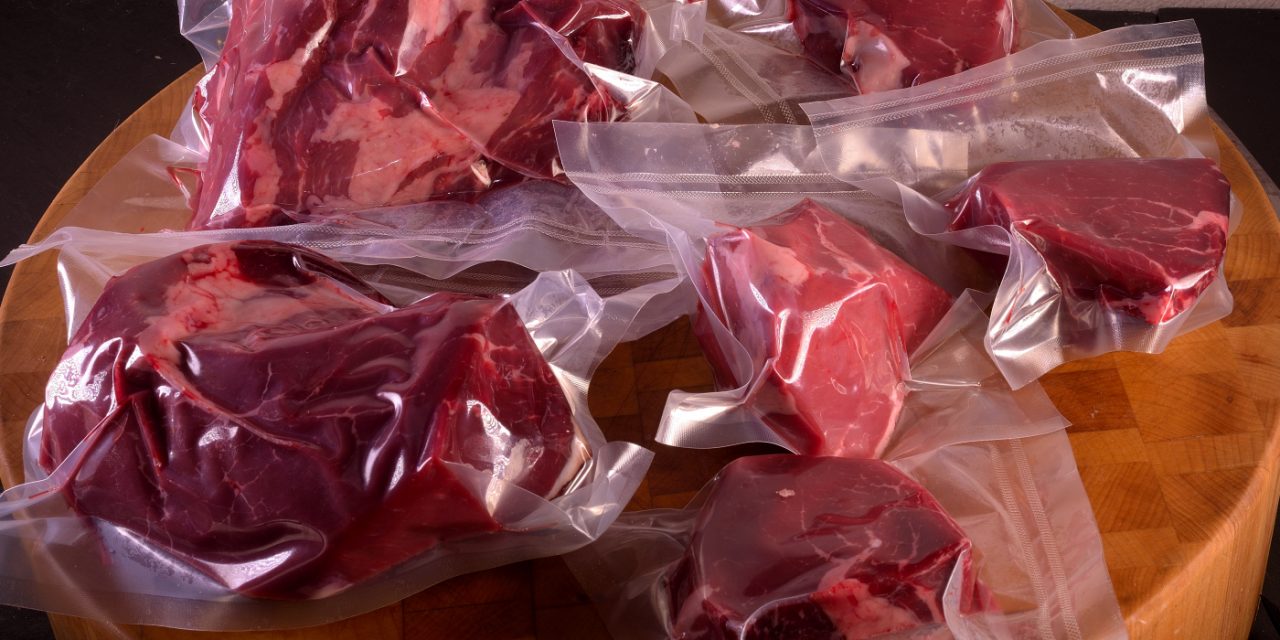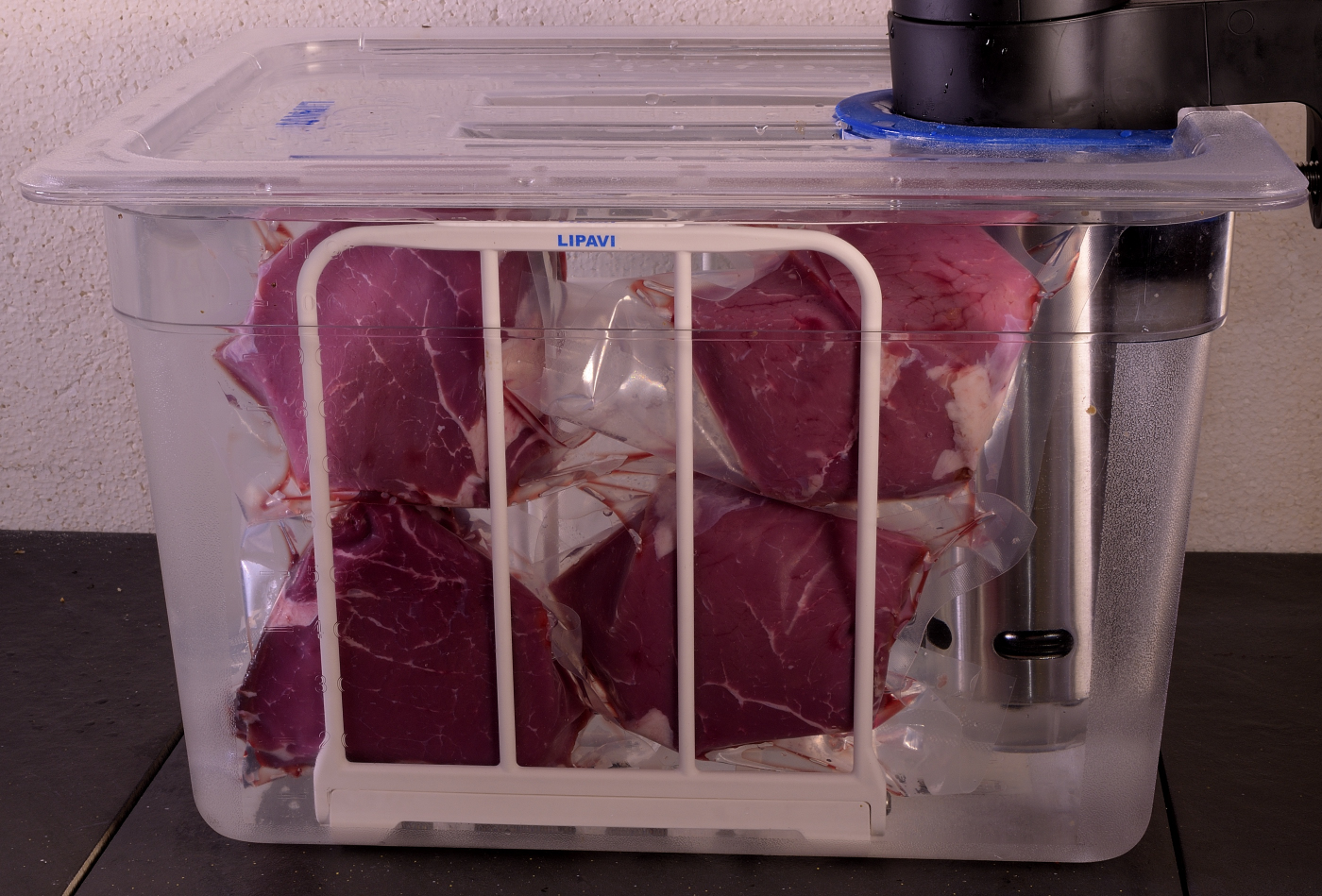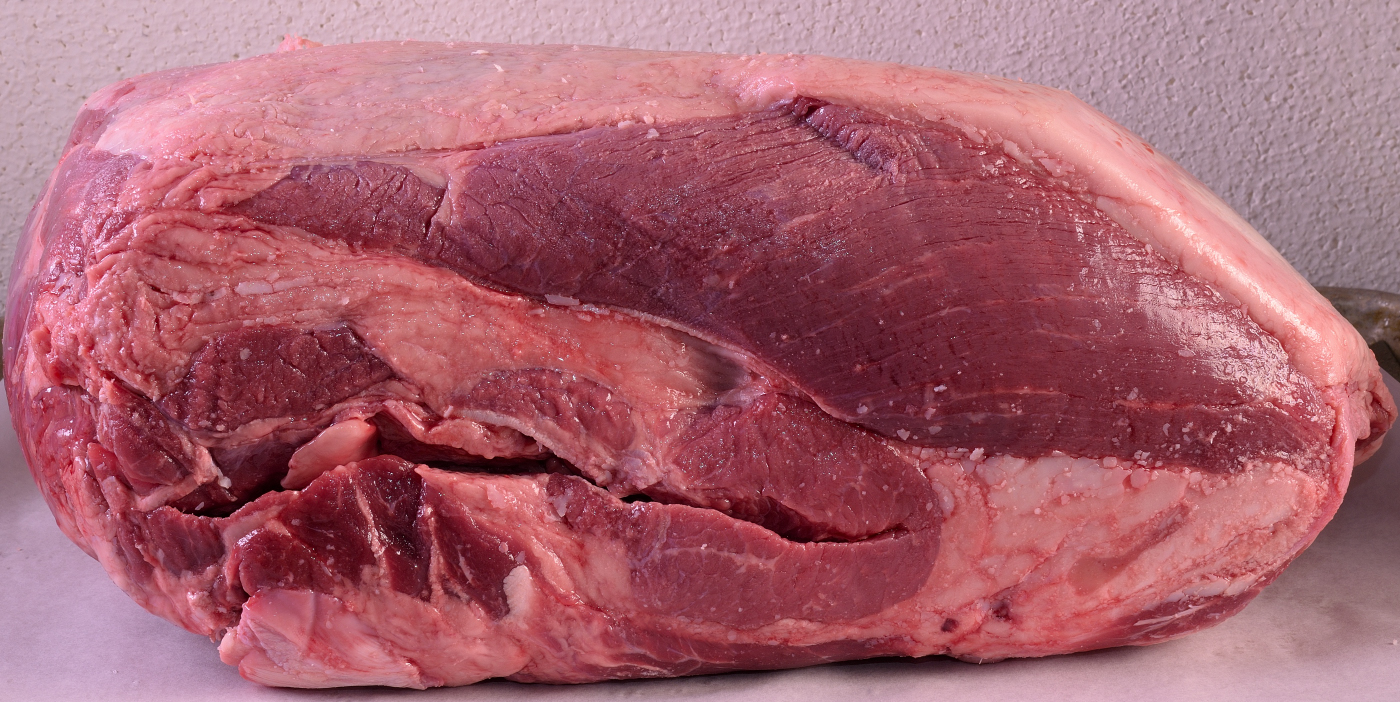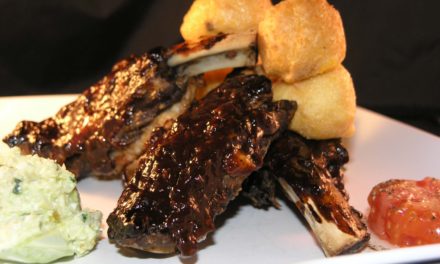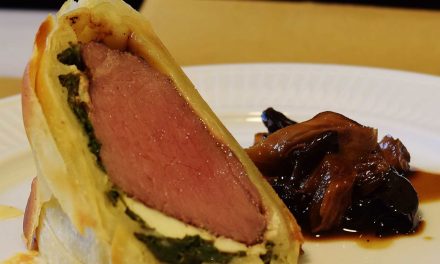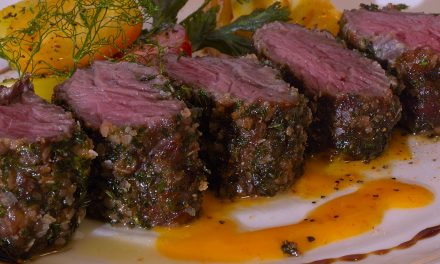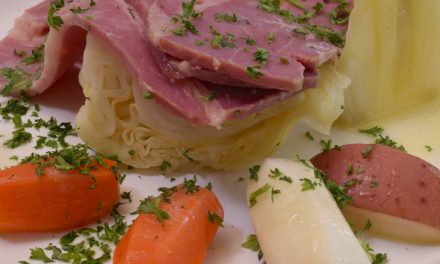One for the ages
Superior quality at a savings in cost can be achieved when one purchases whole primal cuts. In the case of beef top sirloin, the challenge is to trim and cut it properly so as to make the most of this cut. This article shows exactly how to do that.
Above: 14.5 lbs./6.6 Kg.
Off the hoof
Breaking down a top sirloin seems more complex than slicing New York steaks or rib eyes at first. Even so, it is no more difficult than, say, updating your email address on your cell phone after you change it on your computer. Some chefs/butchers just cut it into two or three logs and slice steaks. We will take a slightly different course.
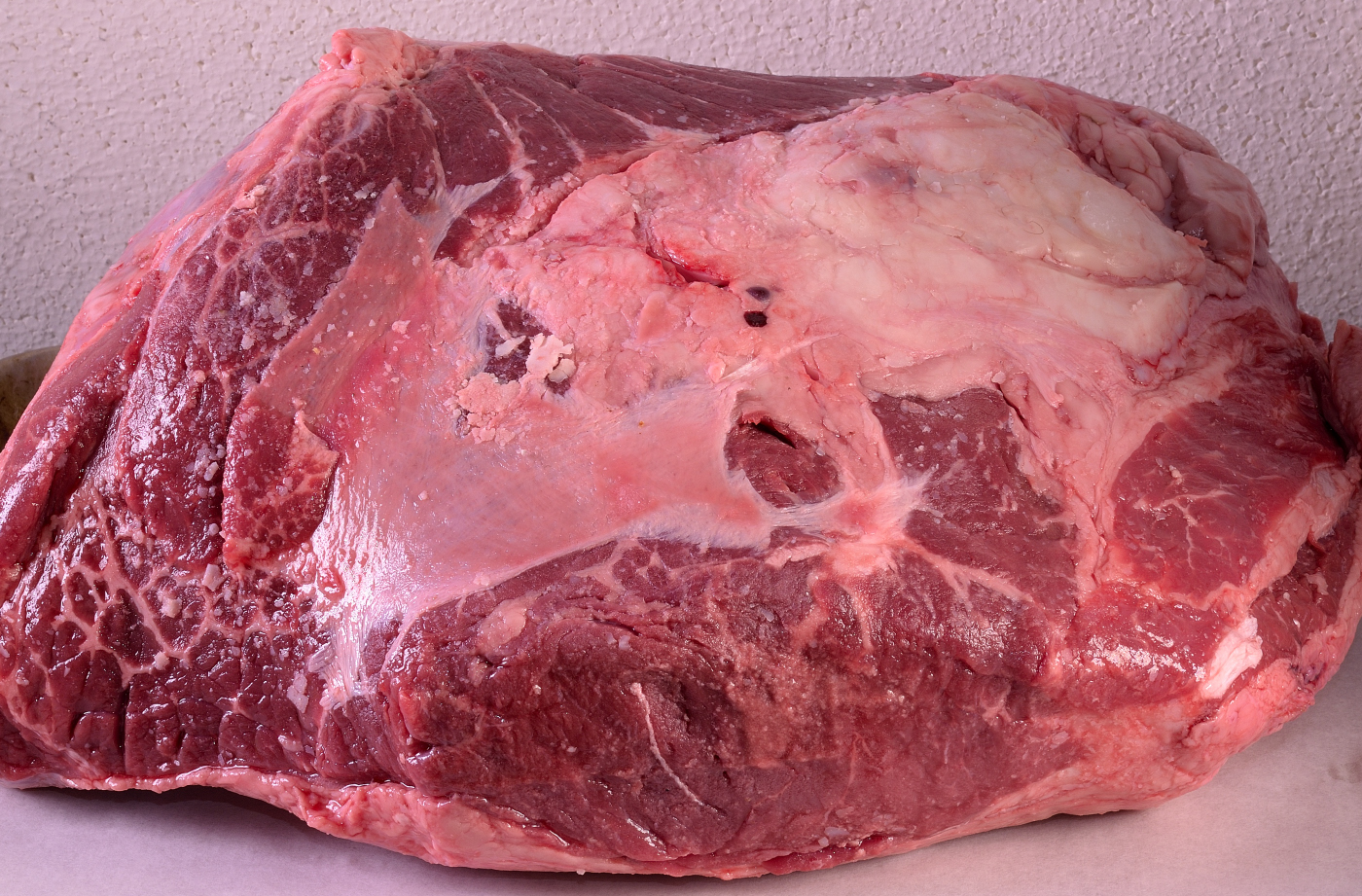
Above: skin side down, the primal is “blockish.” It originates in the hind quarter, between the steer’s short loin and the round. In the center of the picture the leathery, pale pink spot is where the muscle connects to the femur–the bone that connects the hip to the animal’s shank.
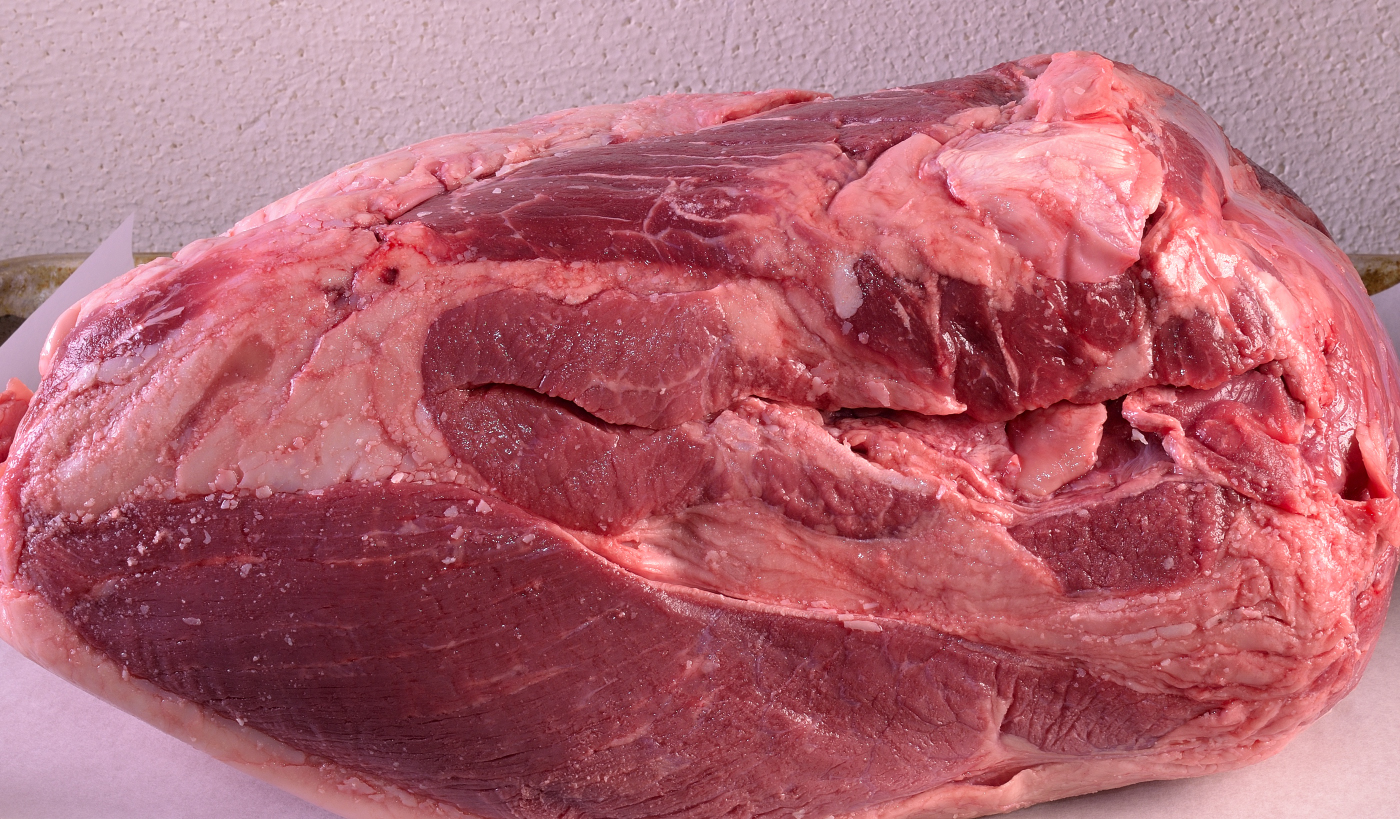
Rotated 180 degrees, the three basic muscles of the top sirloin are visible. At the bottom of the frame is the flap muscle (184D). This is used to create the coulotte/picanha. Above that is a solid piece that composes the major bulk of the primal cut. At the very top, you see a small strip whose grain runs from left to right. That is generically referred to as the “mouse.” It is small, irregular in shape and serves well in the ground beef pile. In butcher’s cases, it is frequently left on the steak. Another reason to learn how to break down this primal.
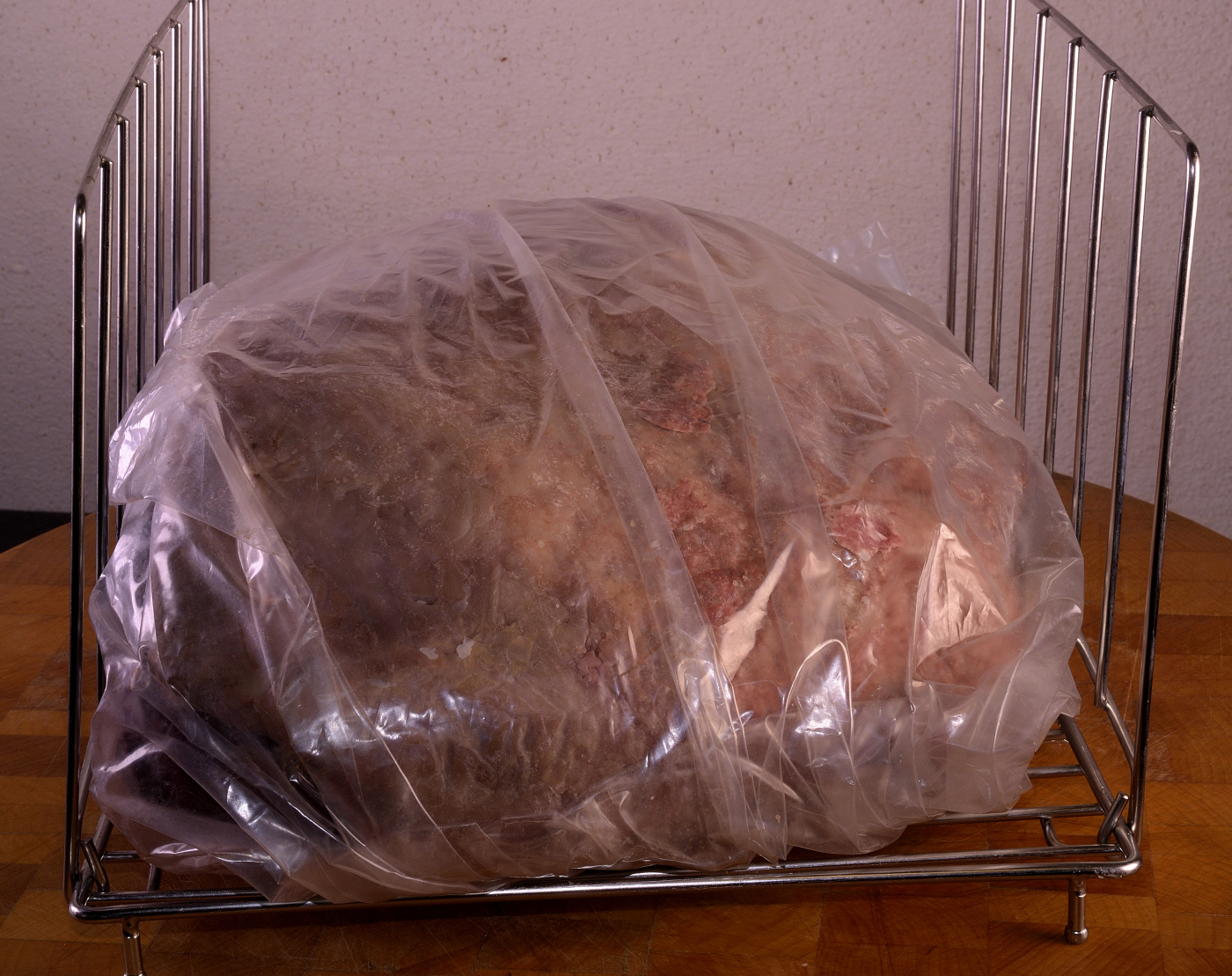
This top sirloin was aged, but It is not necessary to age your top sirloin in order to get excellent results. Aging can activate tenderizing enzymes in the meat. It also concentrates flavor by removing moisture. We used the Umai system and stored the cut at 38F/3C for 45 days.
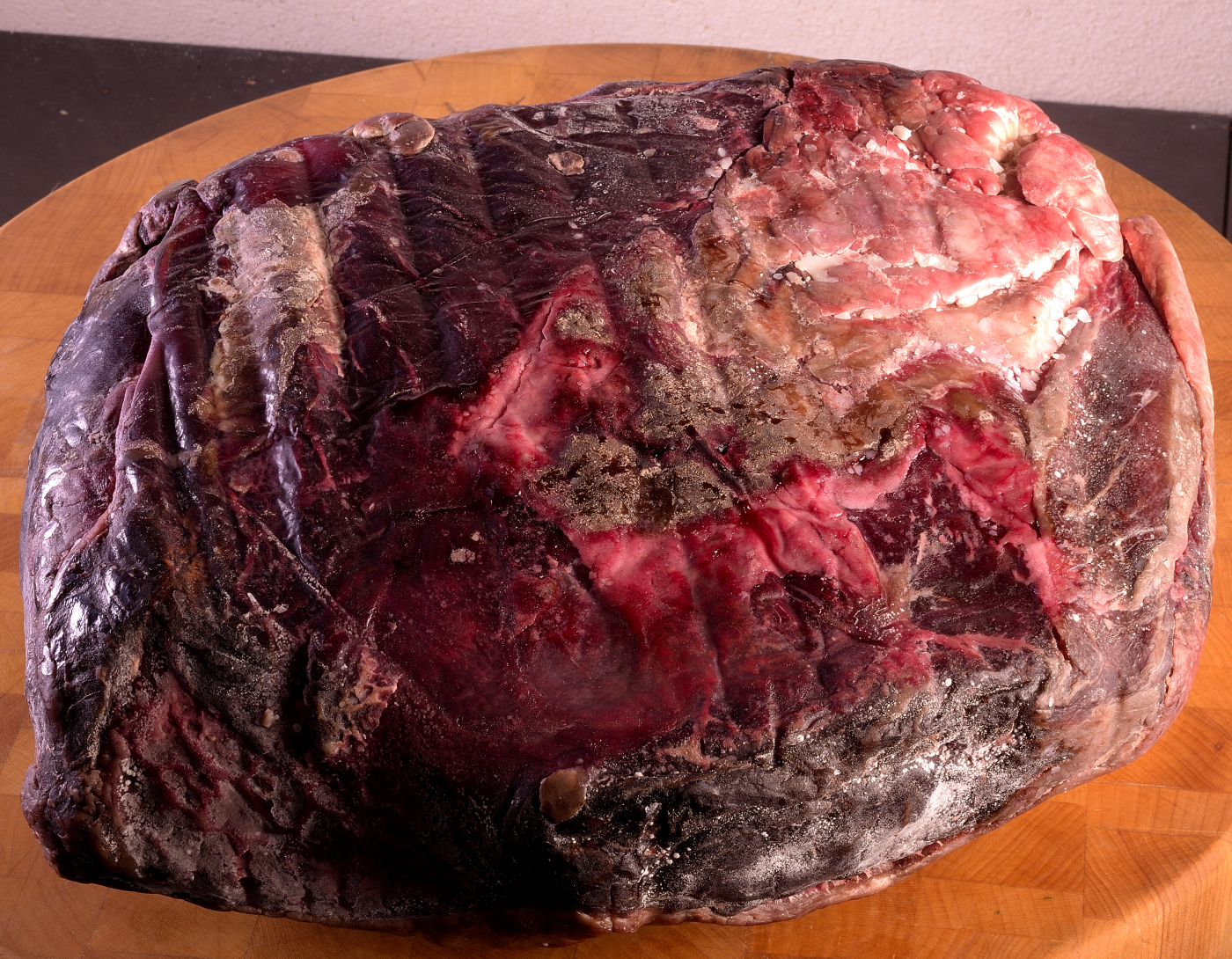
The surface forms a hard, dry pellicle.
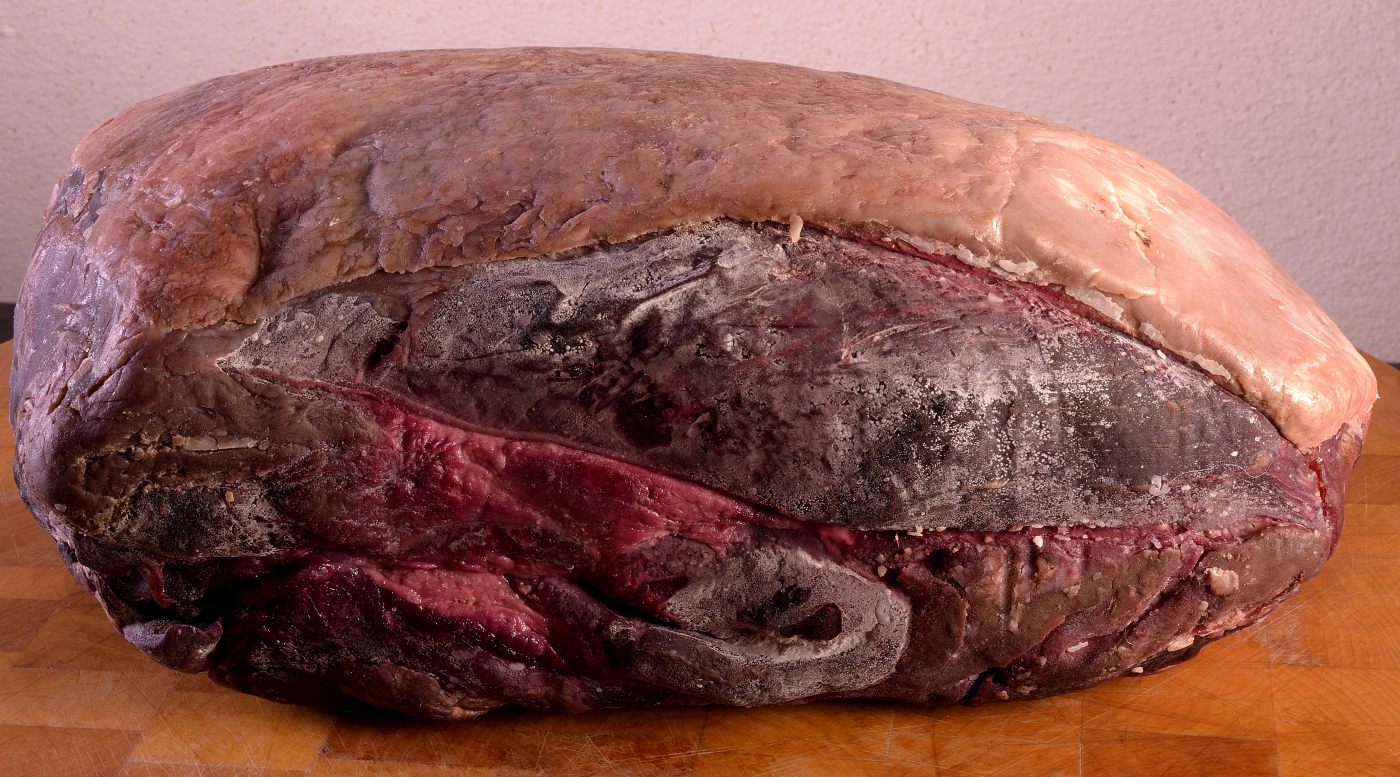
After 45 days at 38F/3C, the cut lost about 15% of its weight. The larger the cut, the longer the process takes. The benefit is that there will be less pellicle to contend with once the process is completed. Aging steaks individually is not recommended.
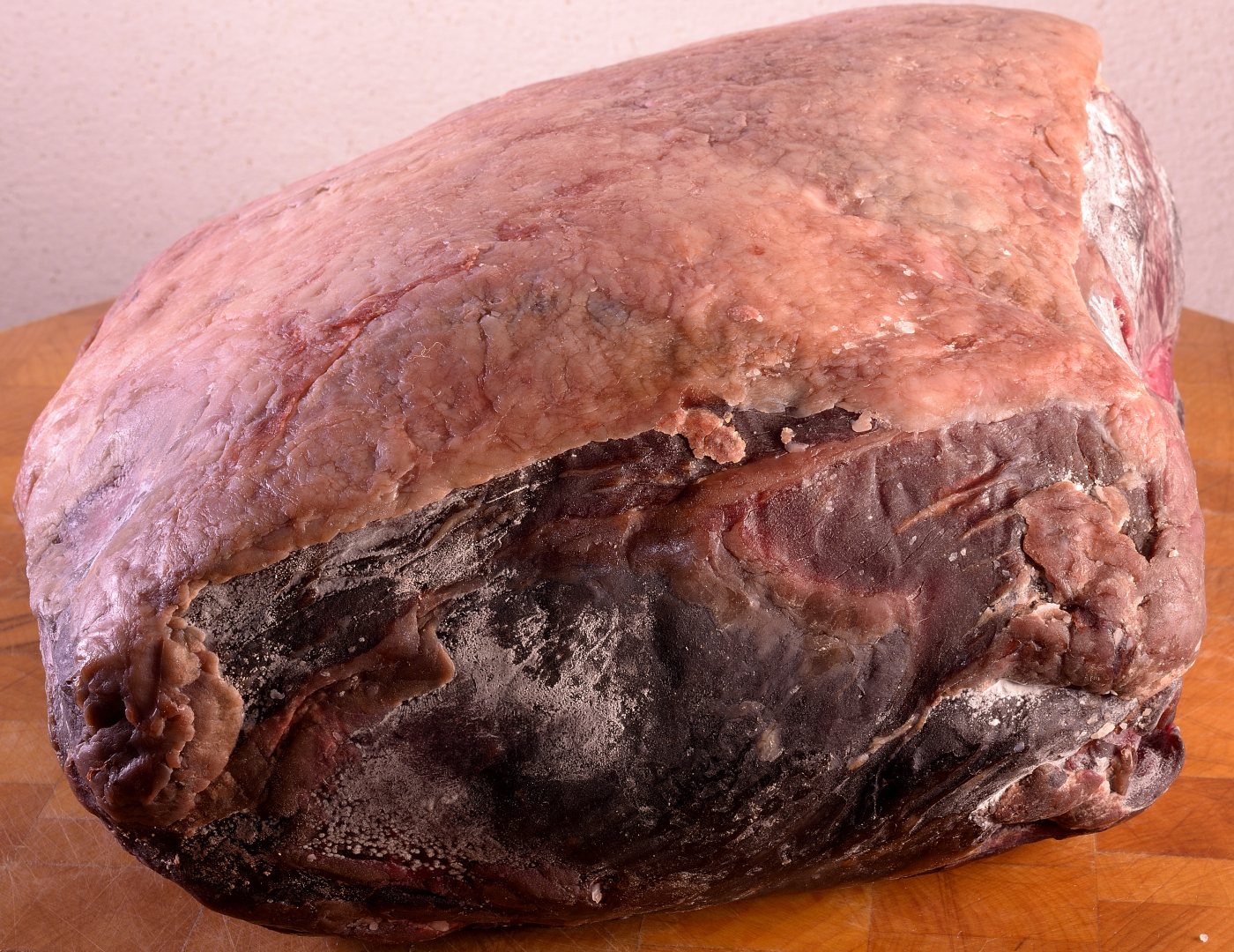
Aged long enough, the top sirloin may lose as much as 30% of its weight. This can take considerably longer than even the most patient practitioners are willing to wait.
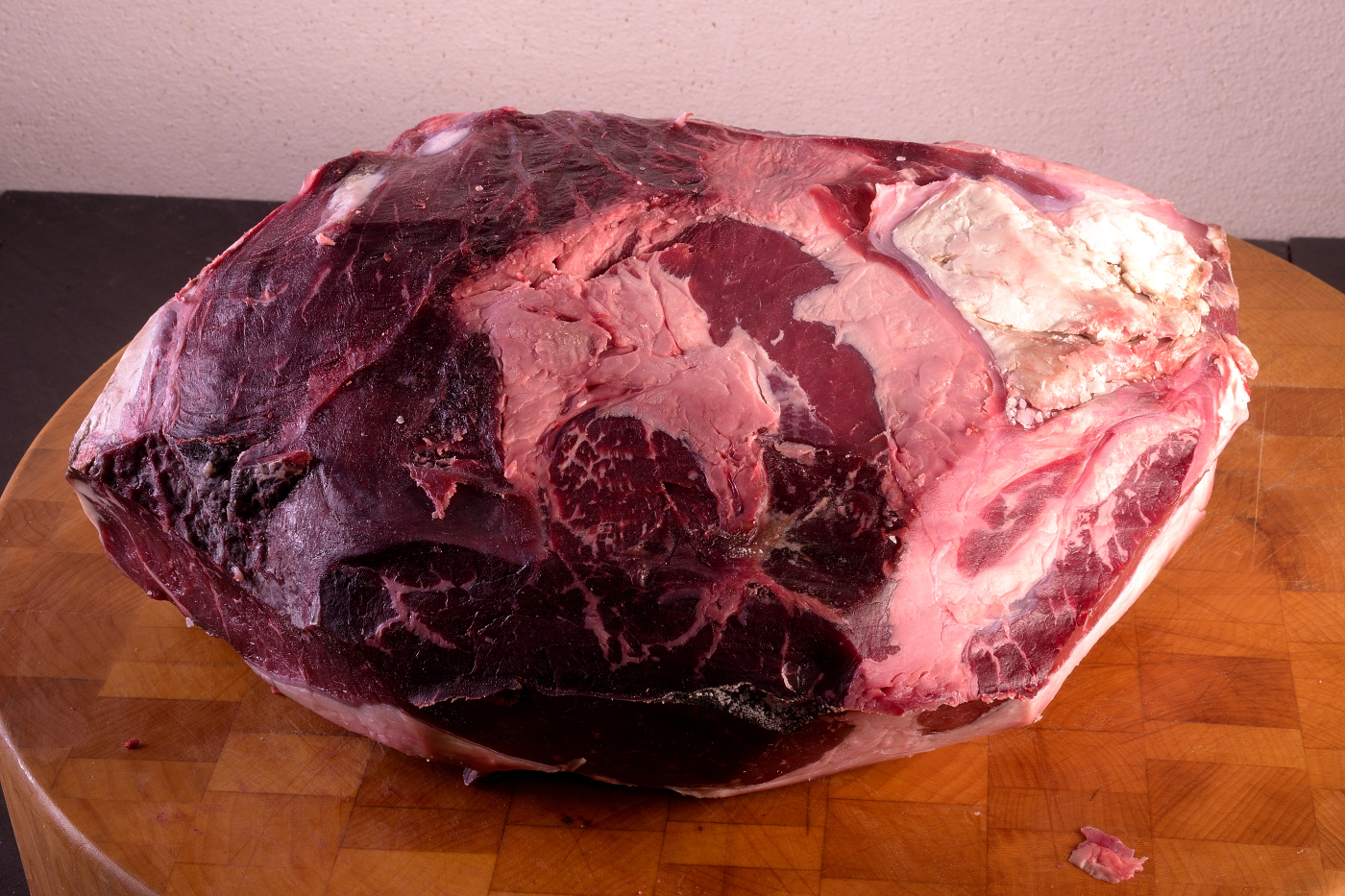
We trimmed 1.5 lbs./680g of the hardened exterior and reserved it for another purpose. Some aficionados incorporate it into ground beef, etc. We used it to make a version of espagnole/demi-glace.
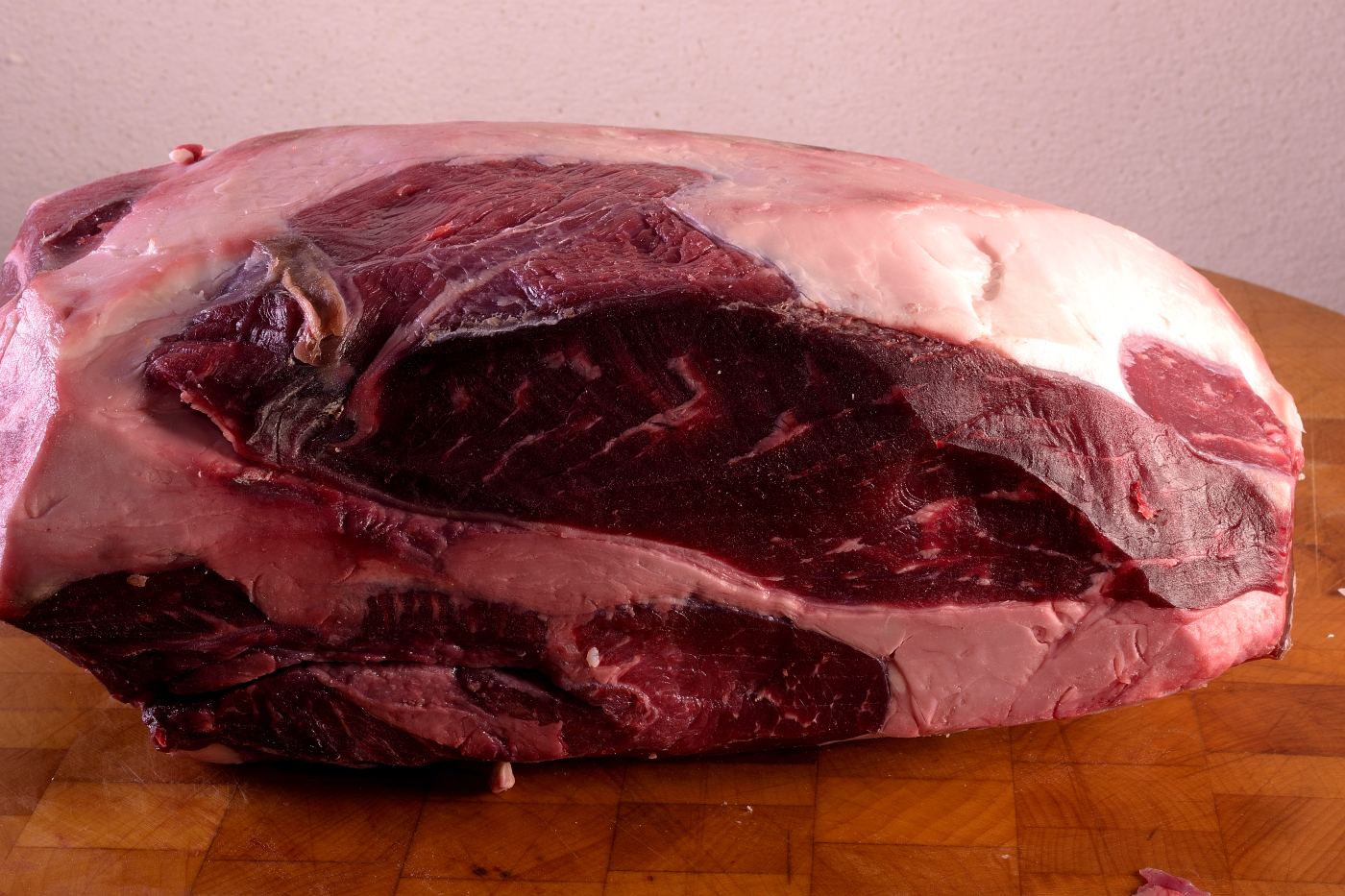
First, we want to remove the flap. Flip the whole cut over.
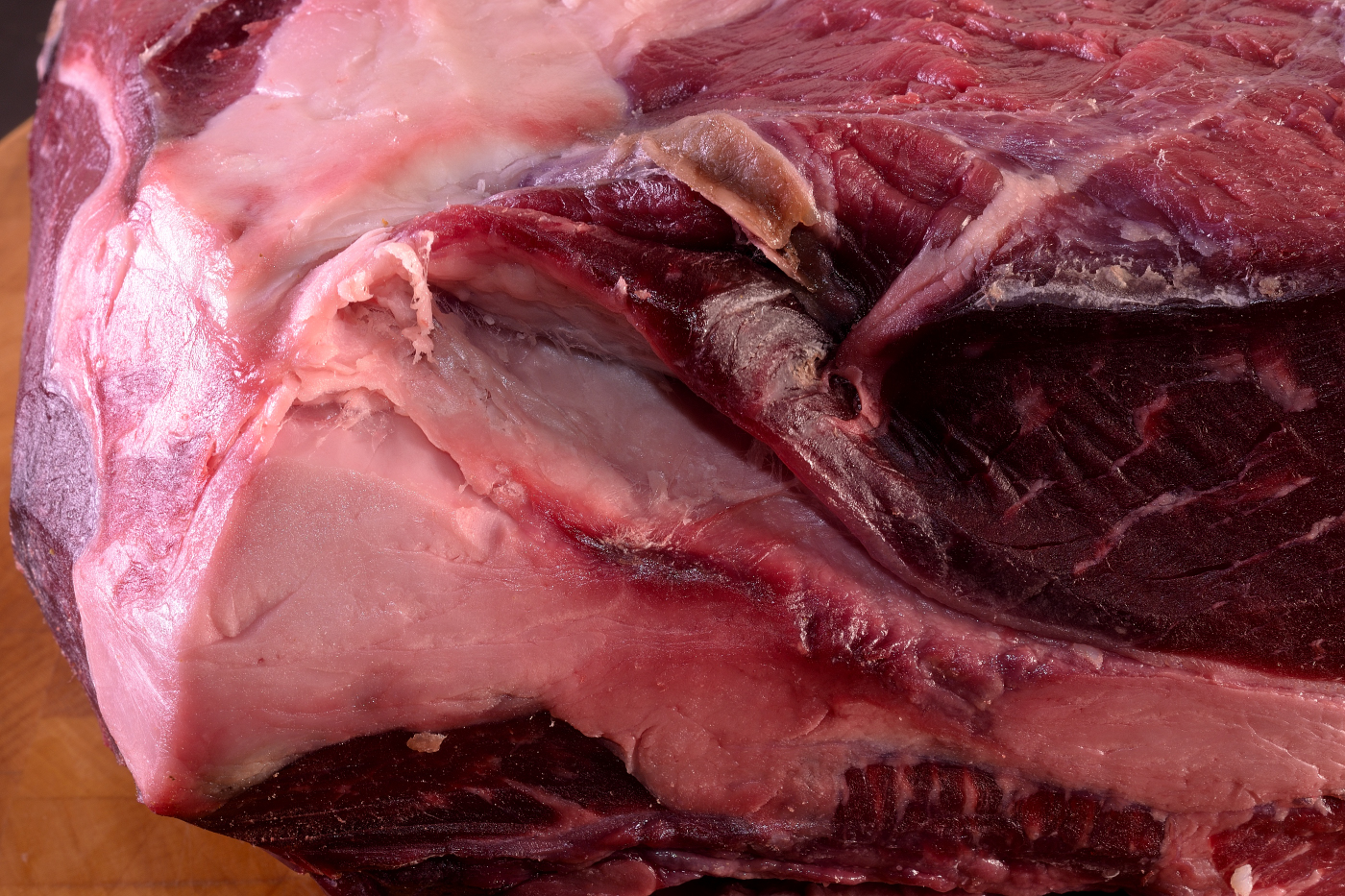
Use a sharp pointed knife to make a cut at the corner where the flap intersects with the rest of the primal.
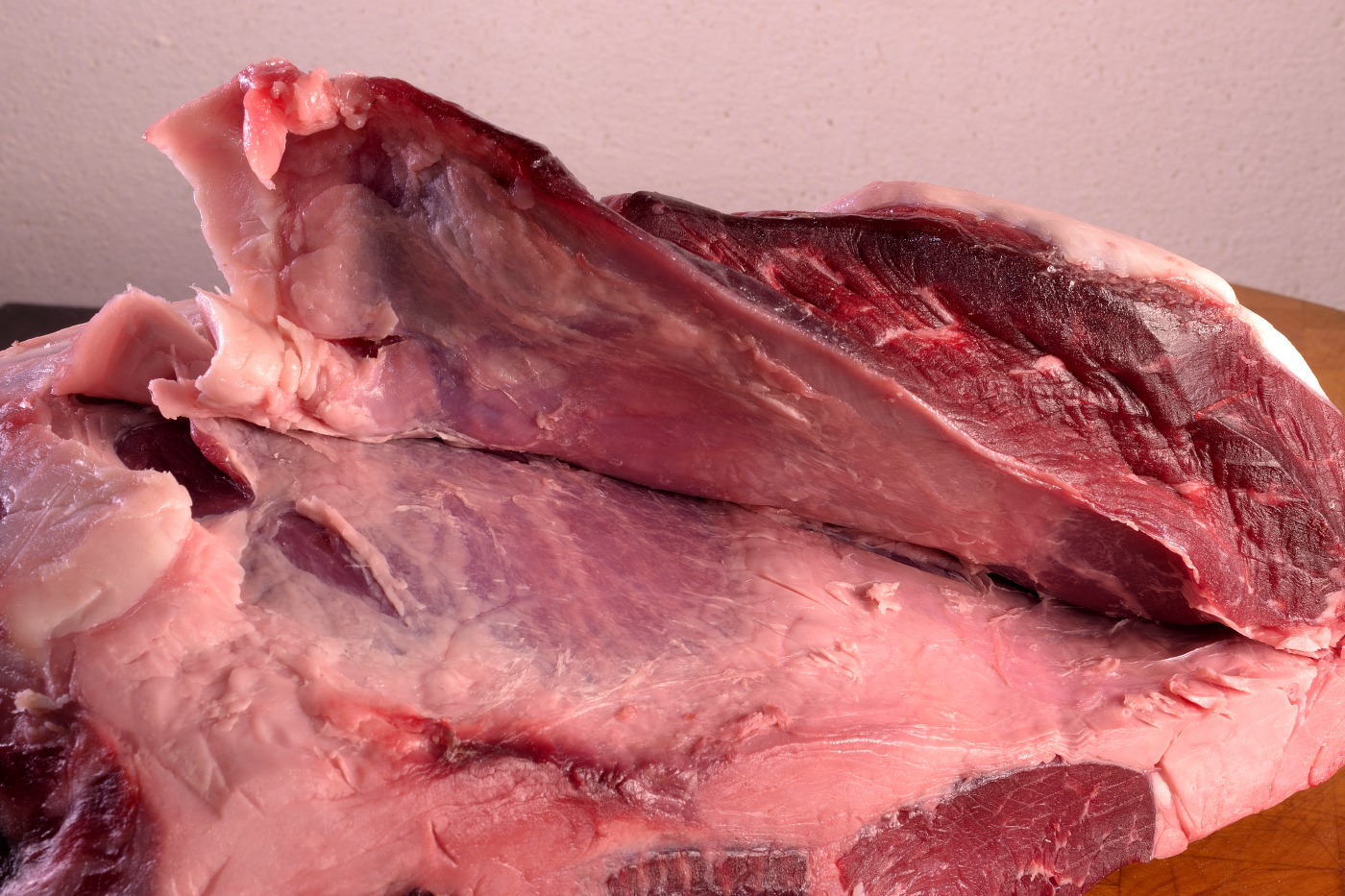
Use the knife to follow along the seam as you pull/peel the flap back.
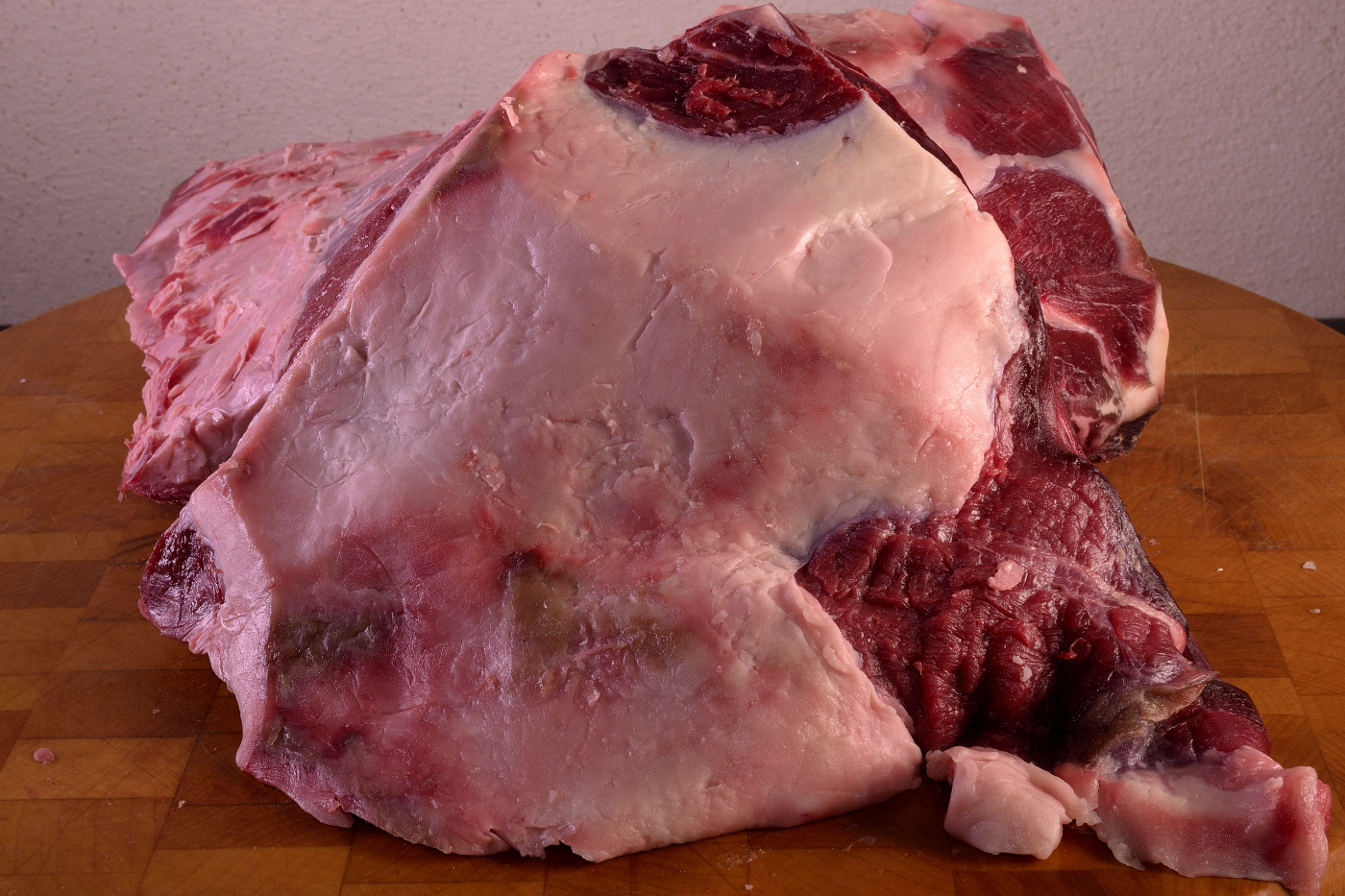
The resulting roast will have a layer of fat. When designated as a picanha, the fat is usually left on as a matter of style preference. According to scientific evidence, the fat cannot interact with the meat during the cooking process other than to start a grease fire in your churrasqueira/BBQ. The amount of fat on the surface of the meat is not directly related to the amount of intramuscular fat/marble.
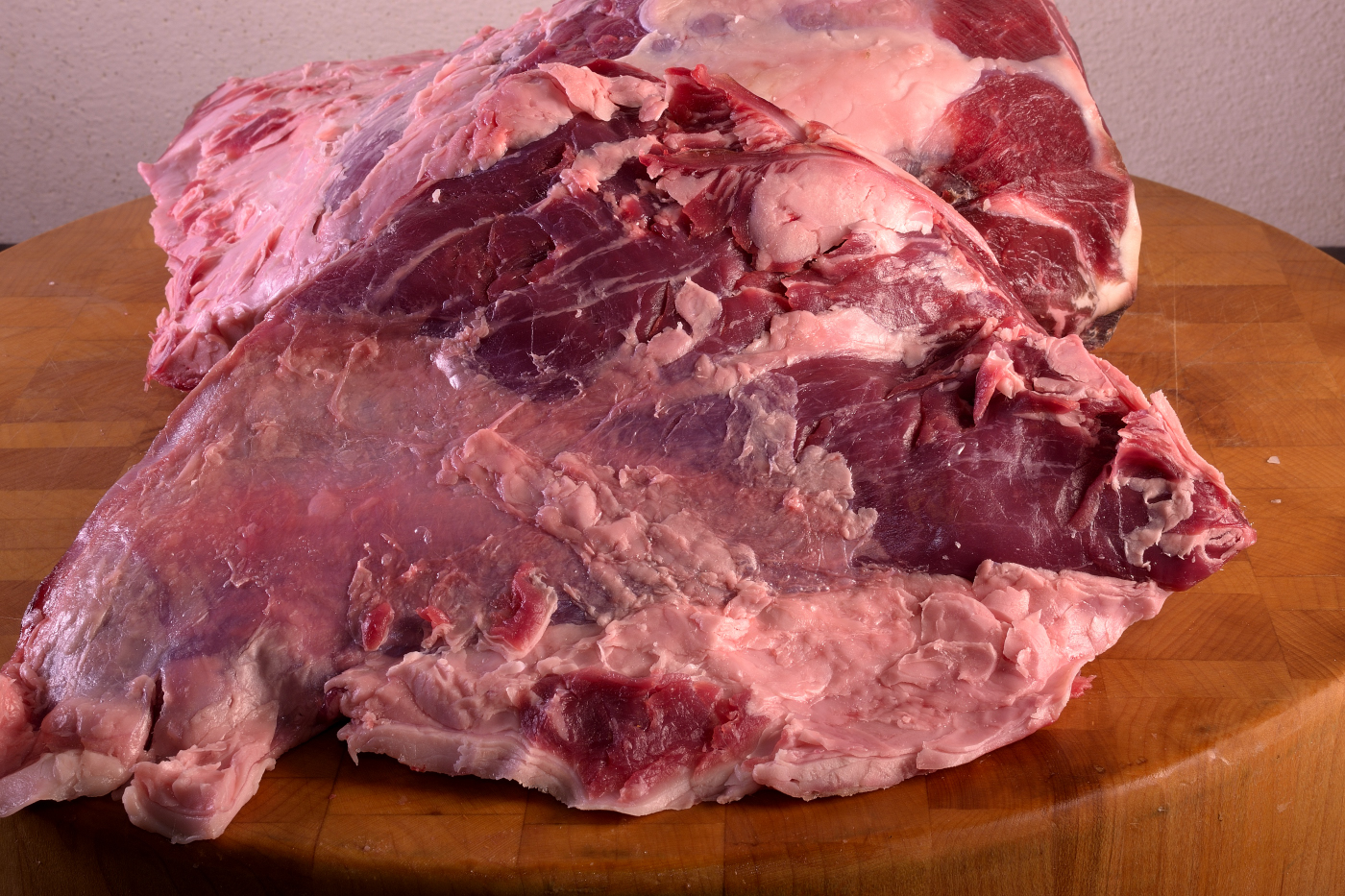
From the underside, there is a certain amount of connective tissue to remove. Save all the trim.
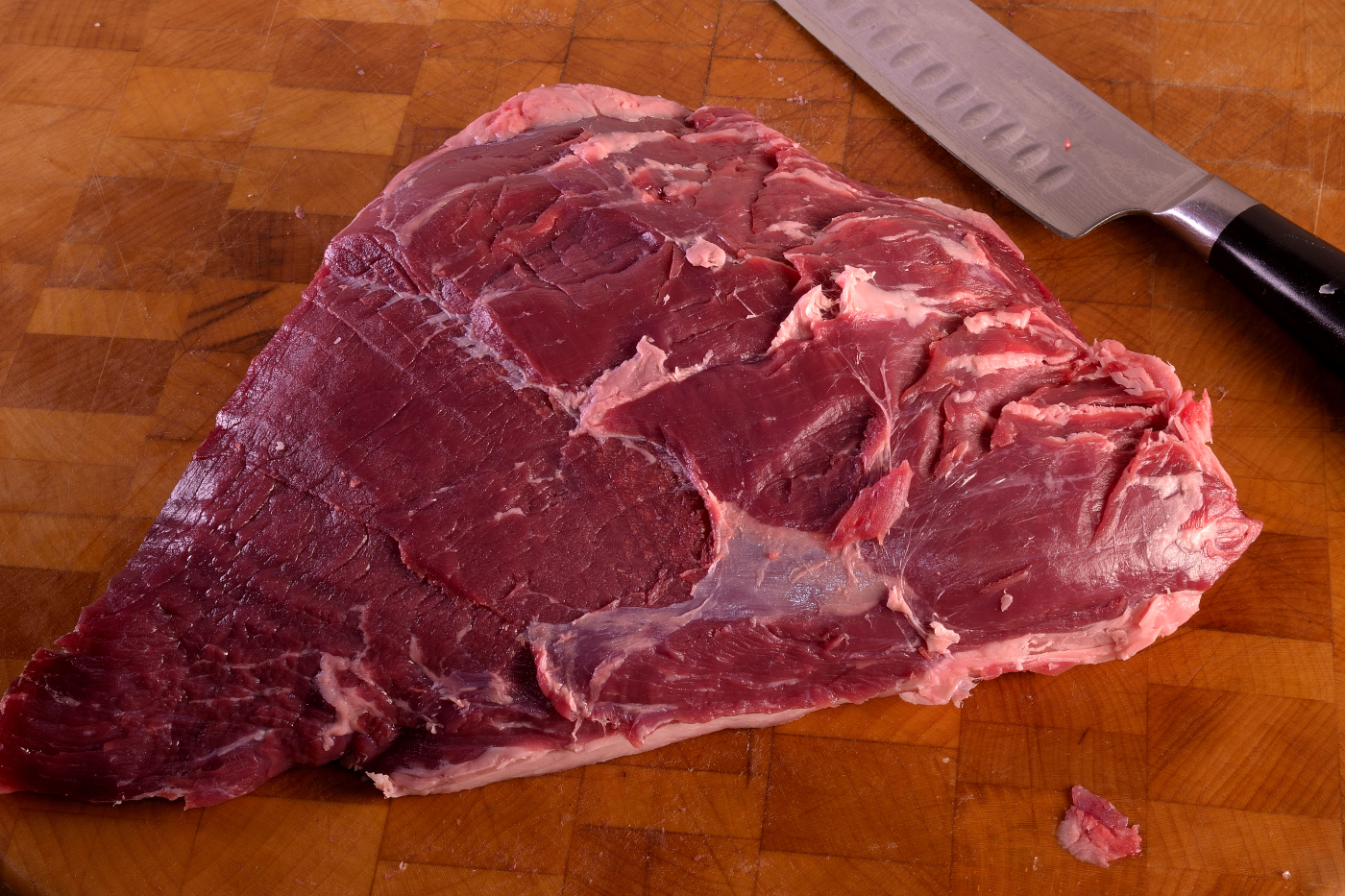
We use the trim (other than the pellicle) to make a high fat grind suitable for Bolognese sauce, etc. Once rendered, the excess fat is drained off. Flip the roast over.

We removed the fat from the “picanha” side with apologies to Argentinian Churrascarias.
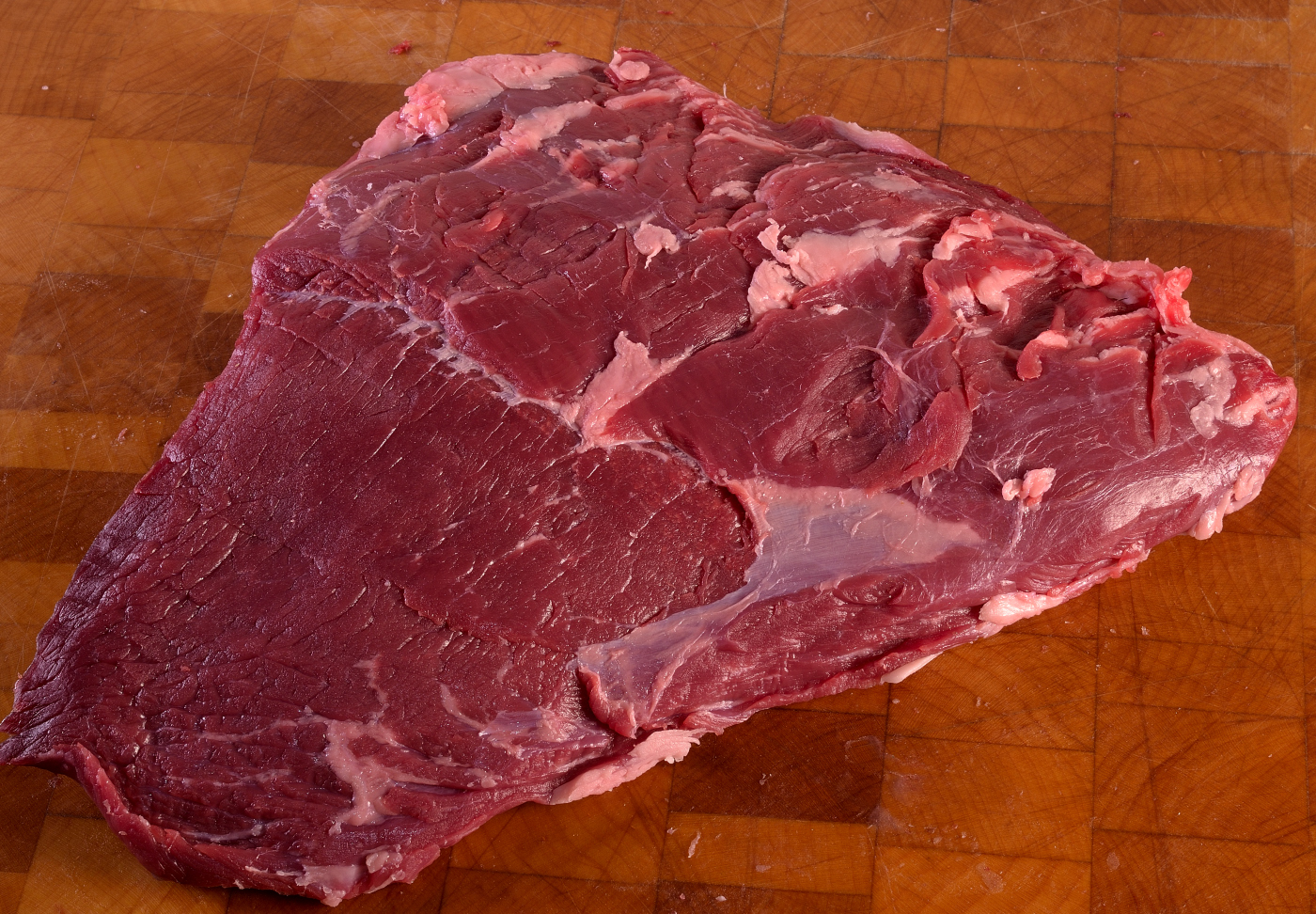
The end result weighs about 2 lbs./900 g. Set aside for the moment.
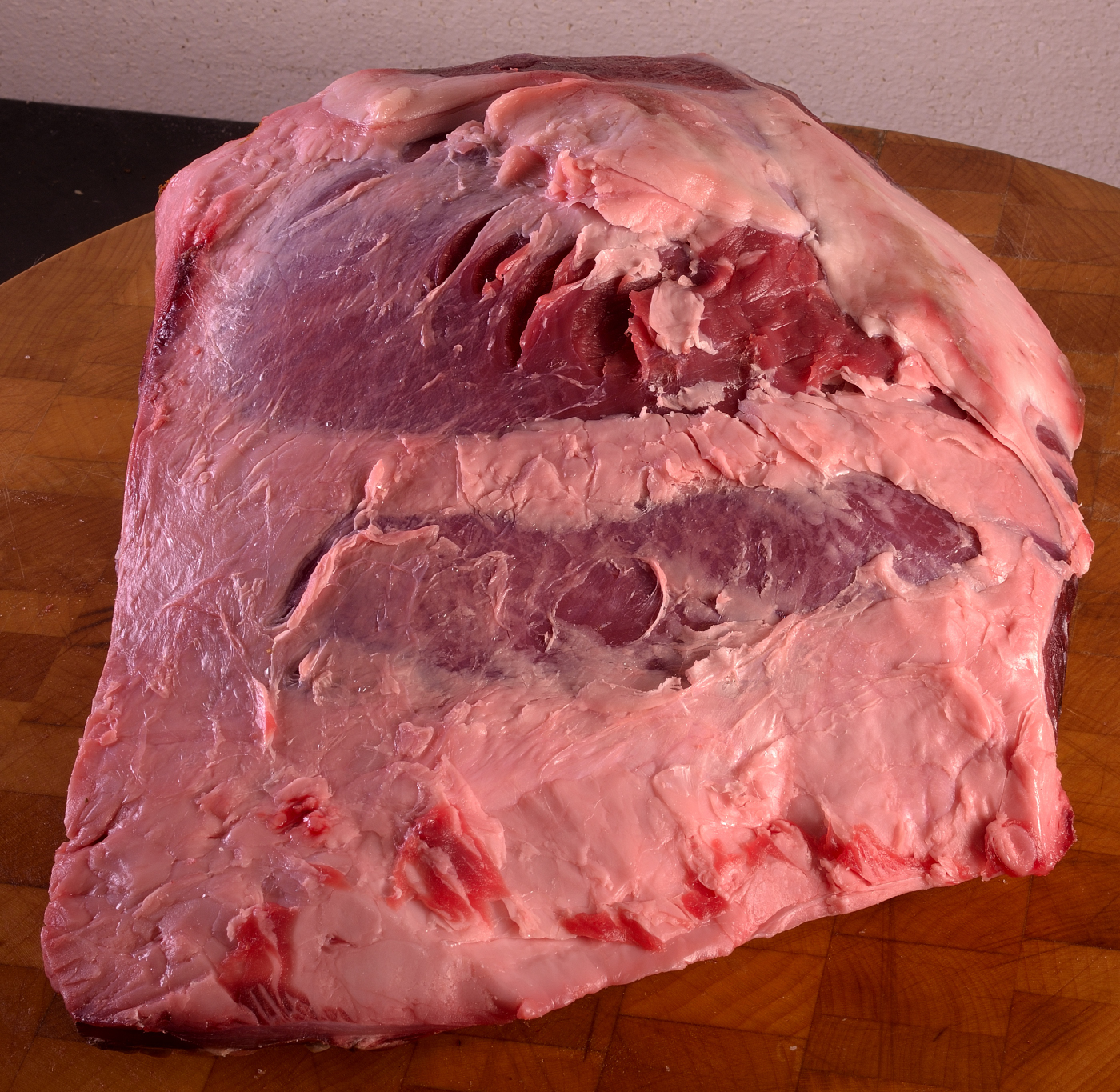
This leaves us a 6lb./2.75Kg block.
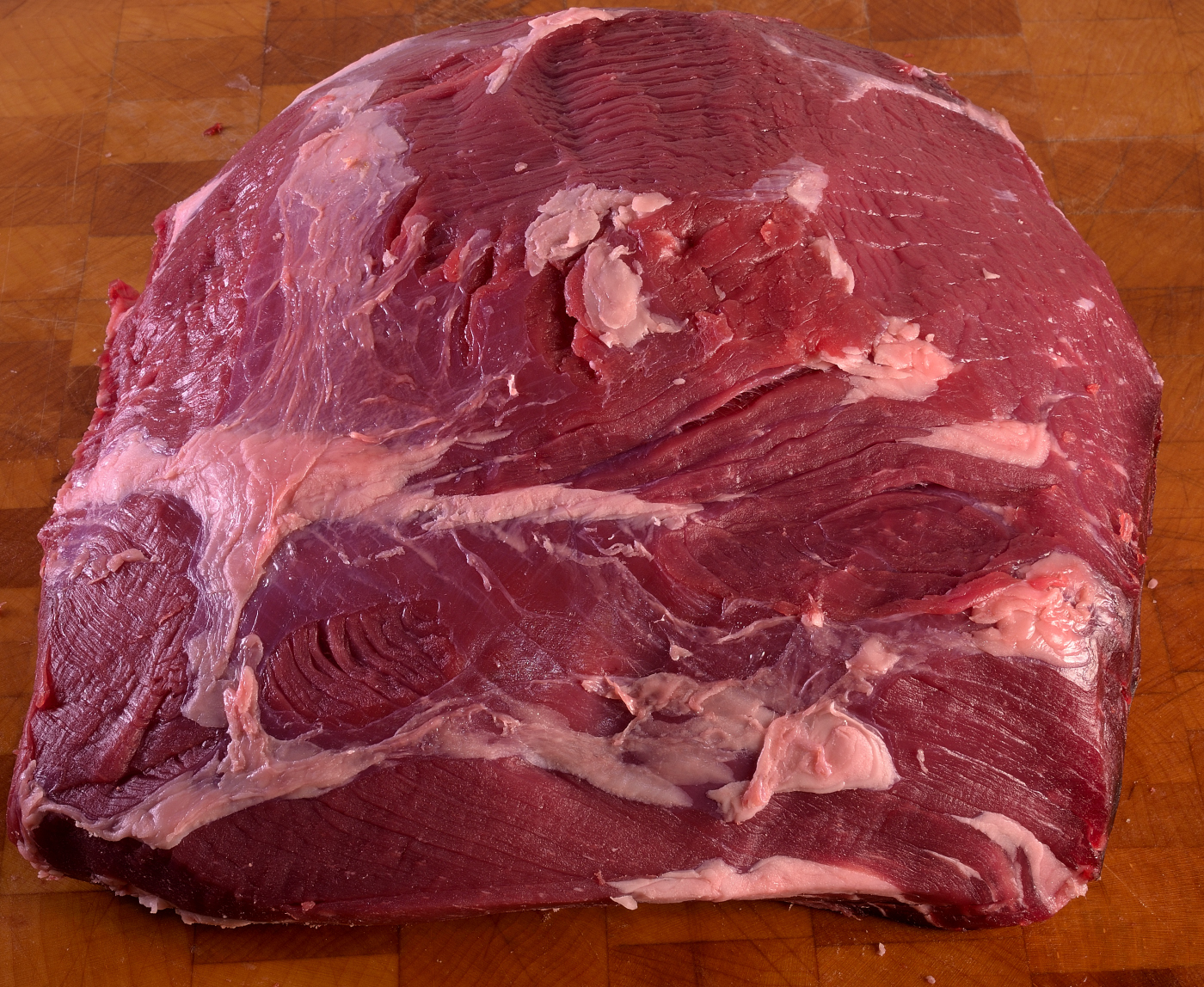
Remove most of the surface fat. Better to leave a little fat on the meat than a lot of meat on the fat, right? Try to use long strokes and, again, save all the trim. Remind yourself that ancient populations did this with a sharpened rock or a seashell.
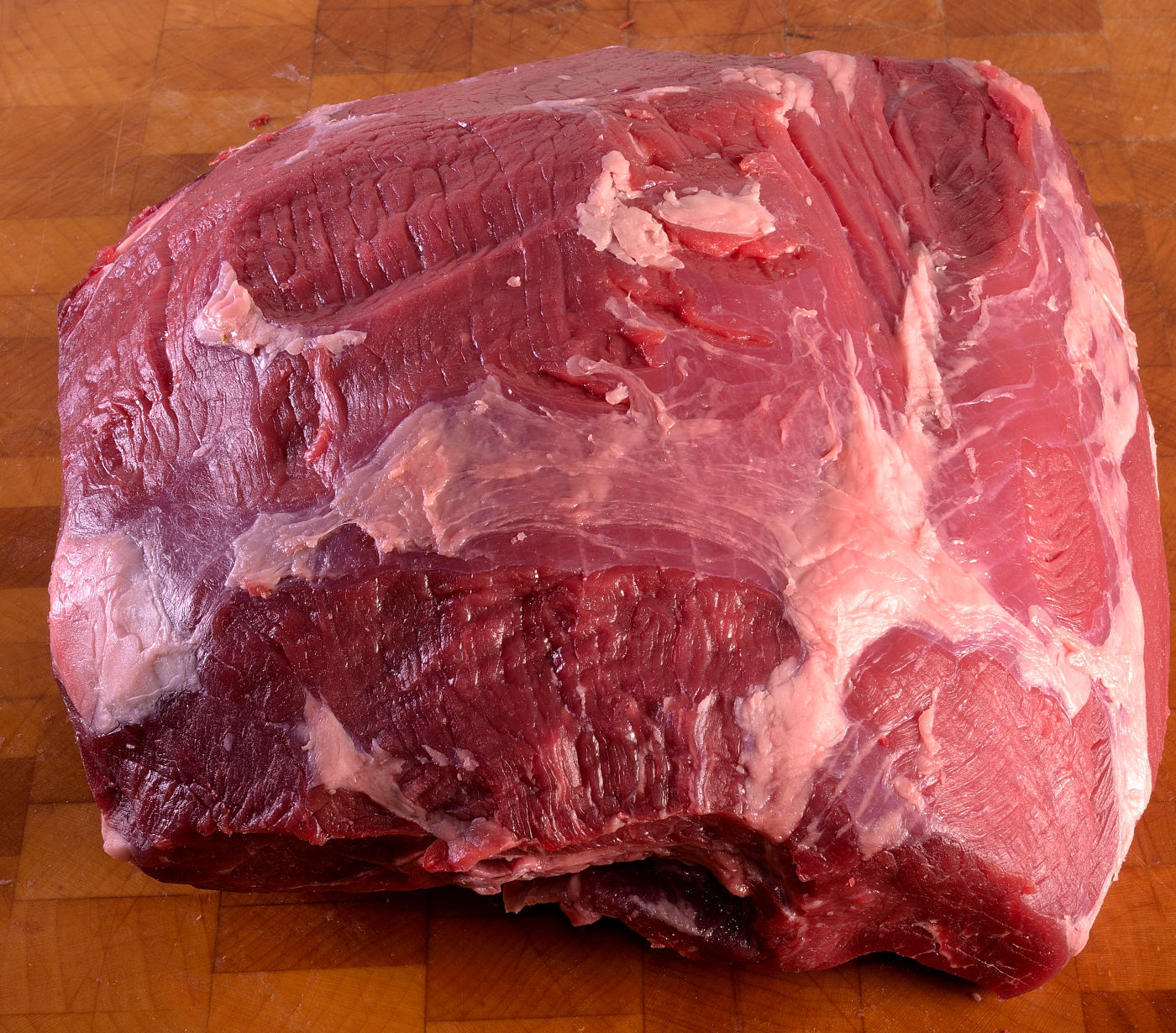
Both sides. Thorough trimming will ultimately yield about 3 lbs./1.5 Kg of “scrap.” Whole top sirloins can usually be found for less than one third of the price of precut steaks. Even if you discard the trim, your steaks/roasts will cost no more than half of the pre-cut price. What would be a $30 steak in a restaurant will cost you no more than $8.
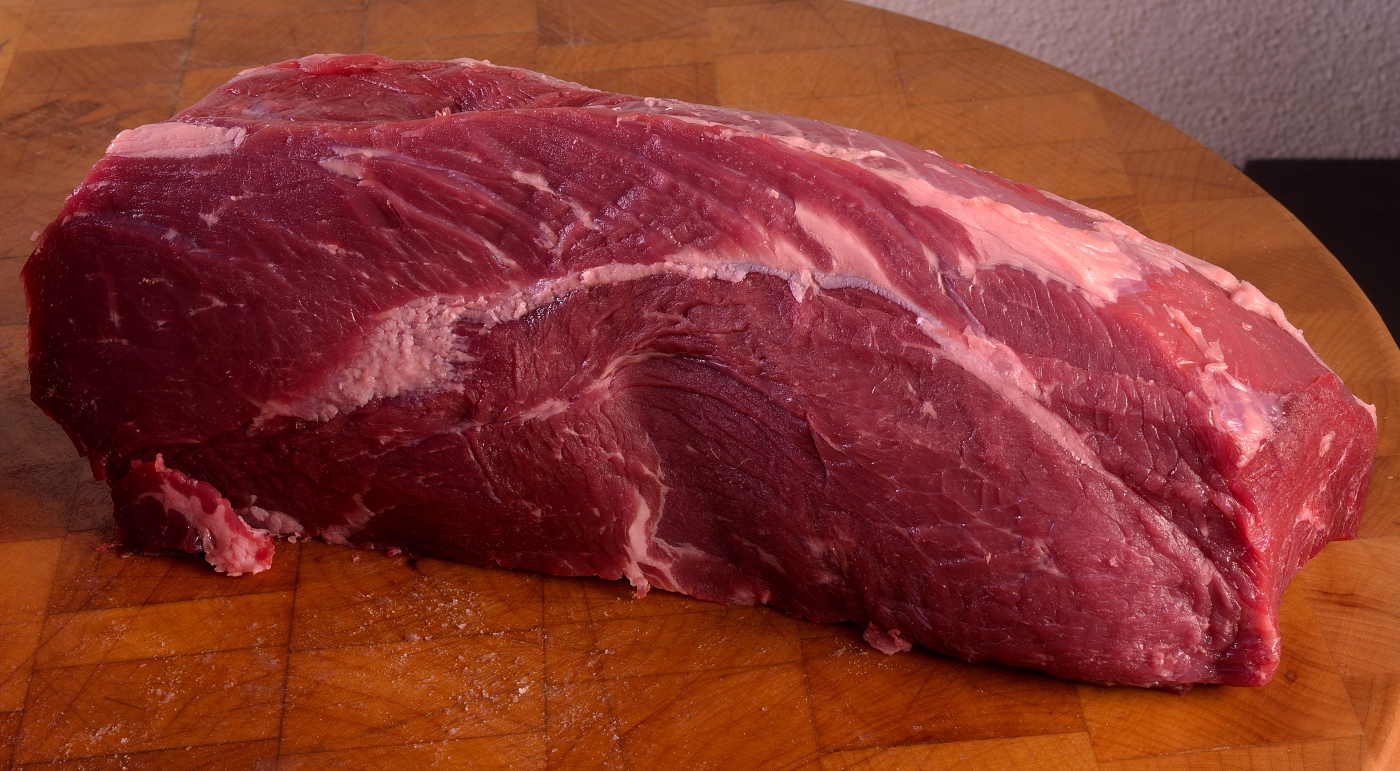
A 28oz./800g log is removed from the right end to cut steaks. About 1/3 of the weight of the block.
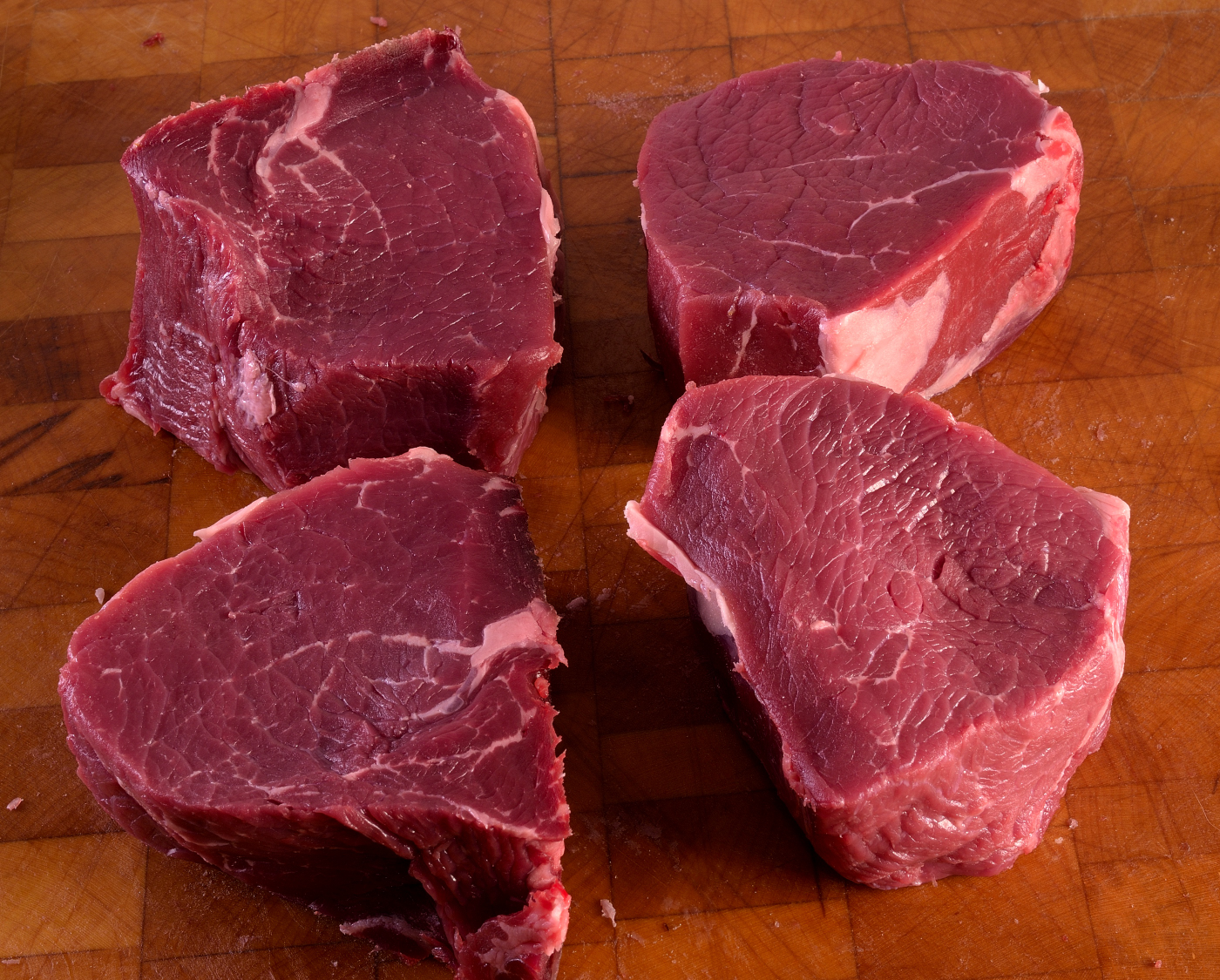
Cut into four 7oz./200g steaks with a little bit more trimming as we go. Vacuum seal and refrigerate.
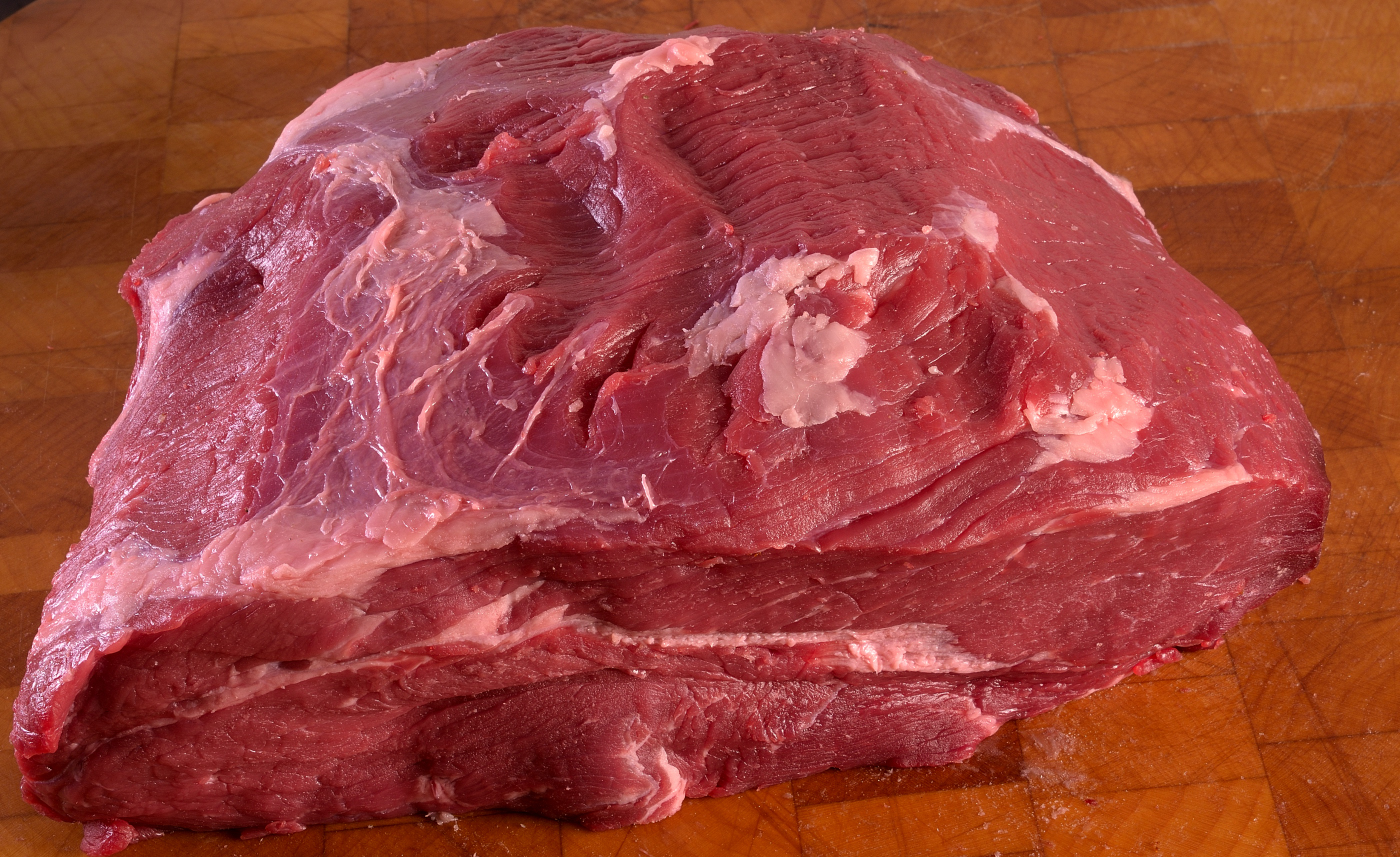
This leaves us with a 4lb./1.8Kg block.
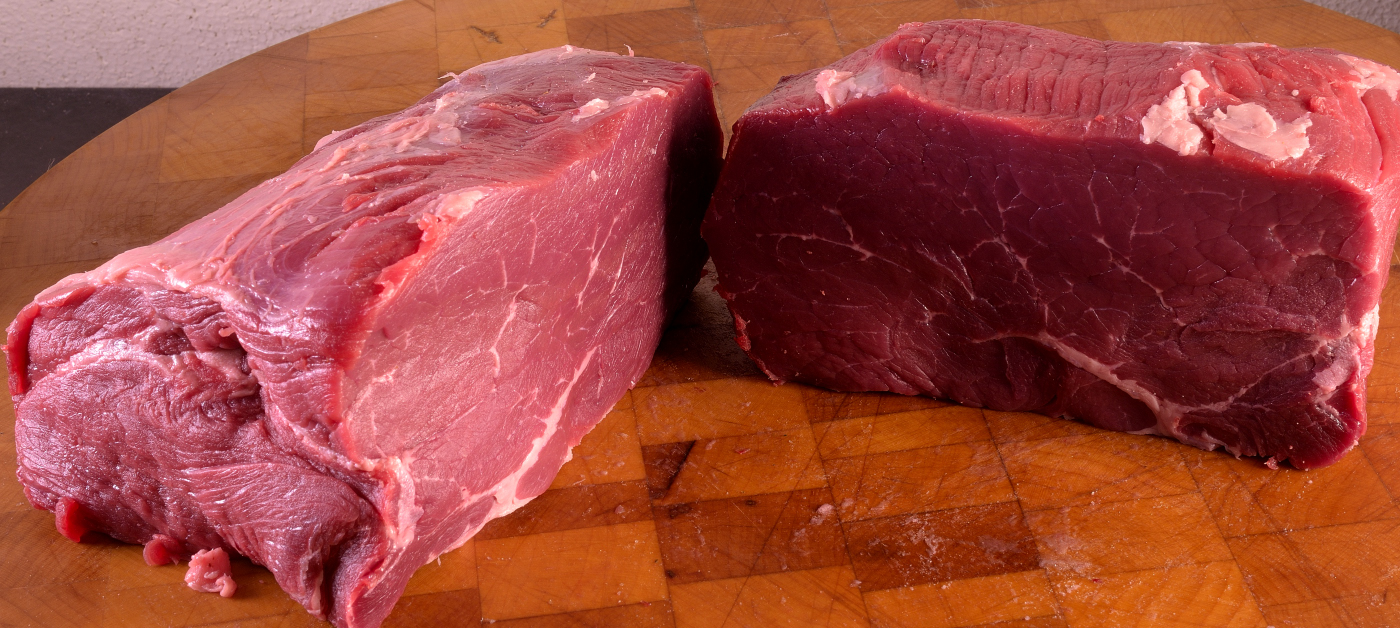
Cut in half, we have two roasts, approximately 2 lbs./900g each.
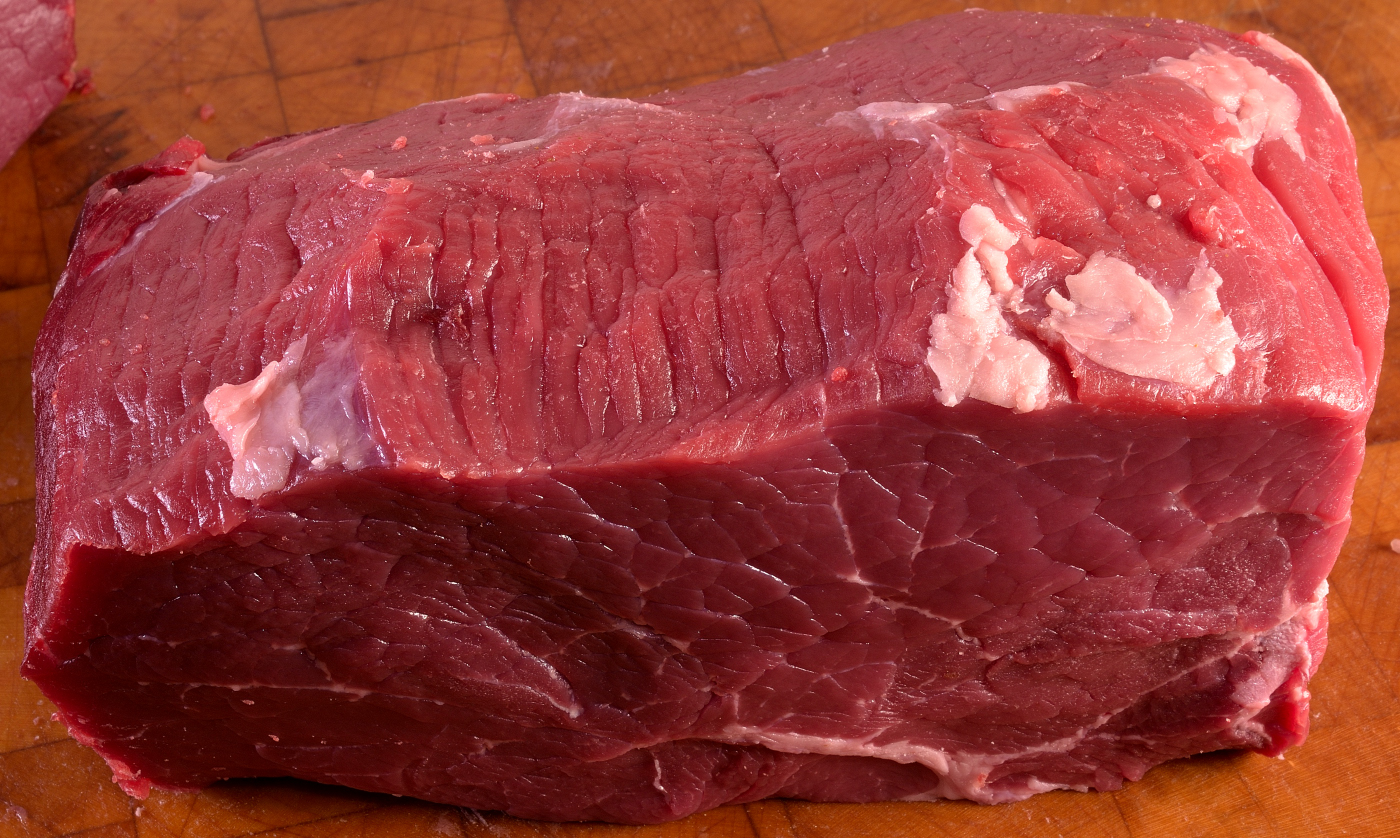
Note the direction of the grain.
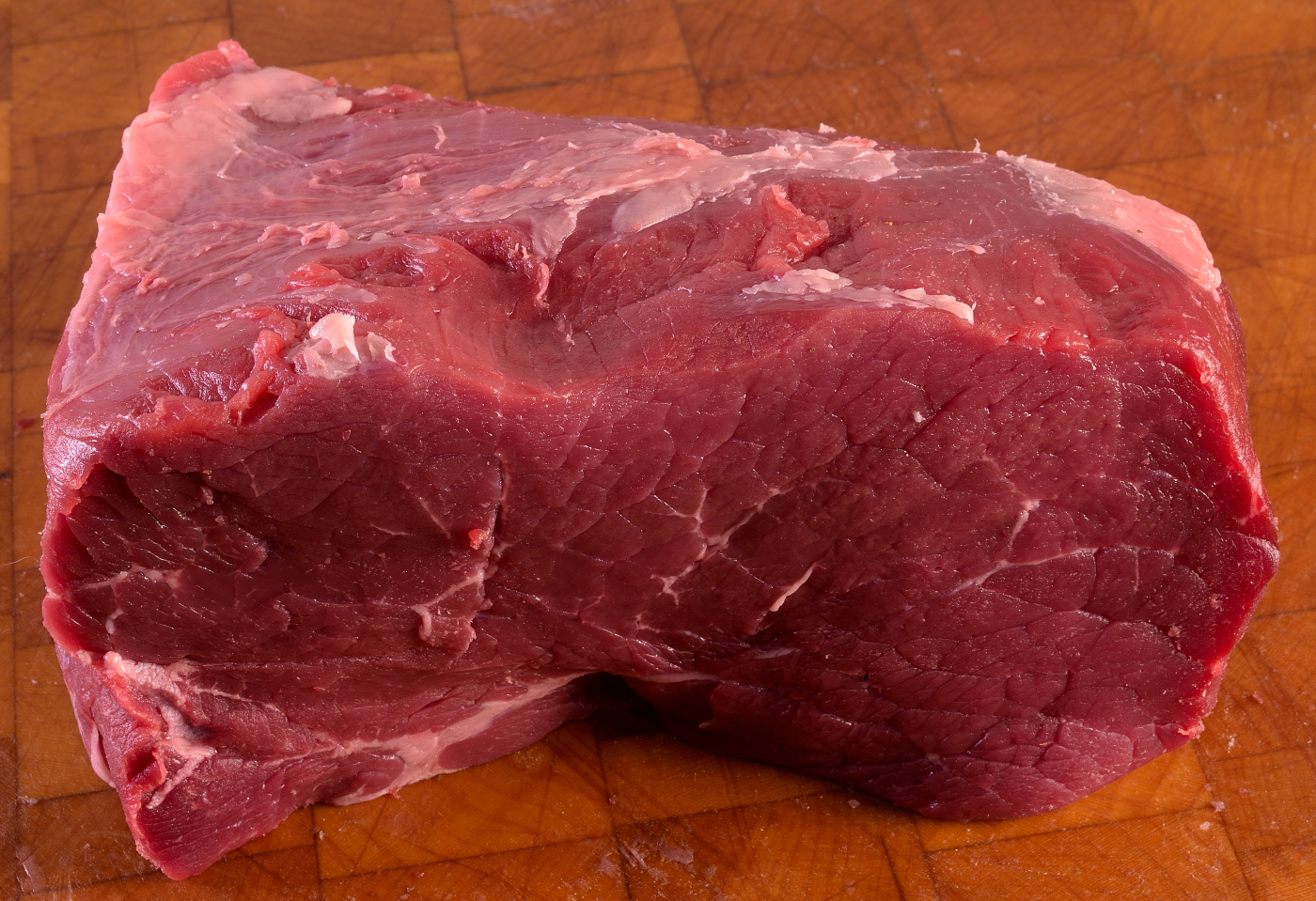
These will yield long, oval shaped slices upon carving.
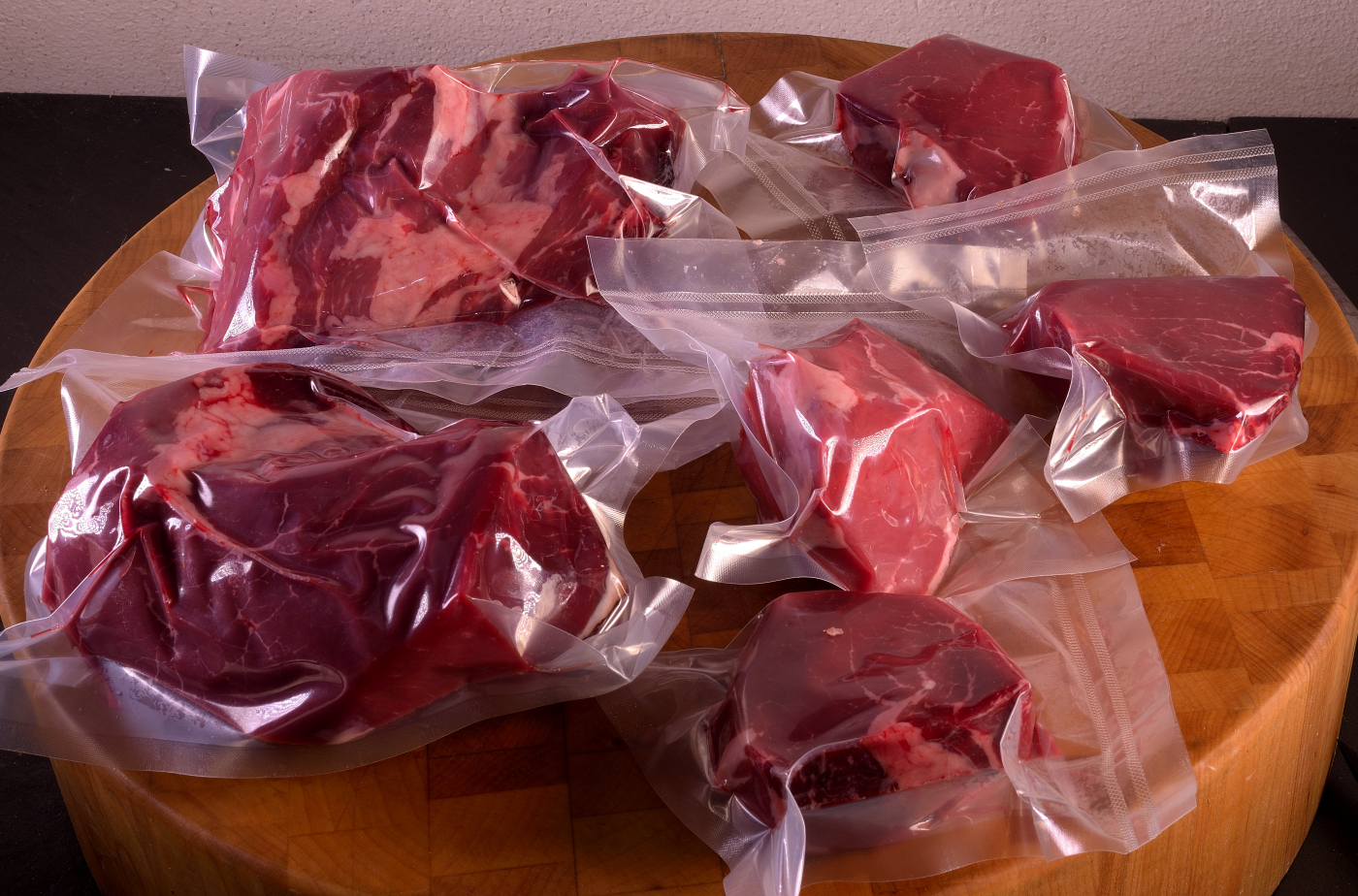
Vacuum seal the roasts in sous vide bags.
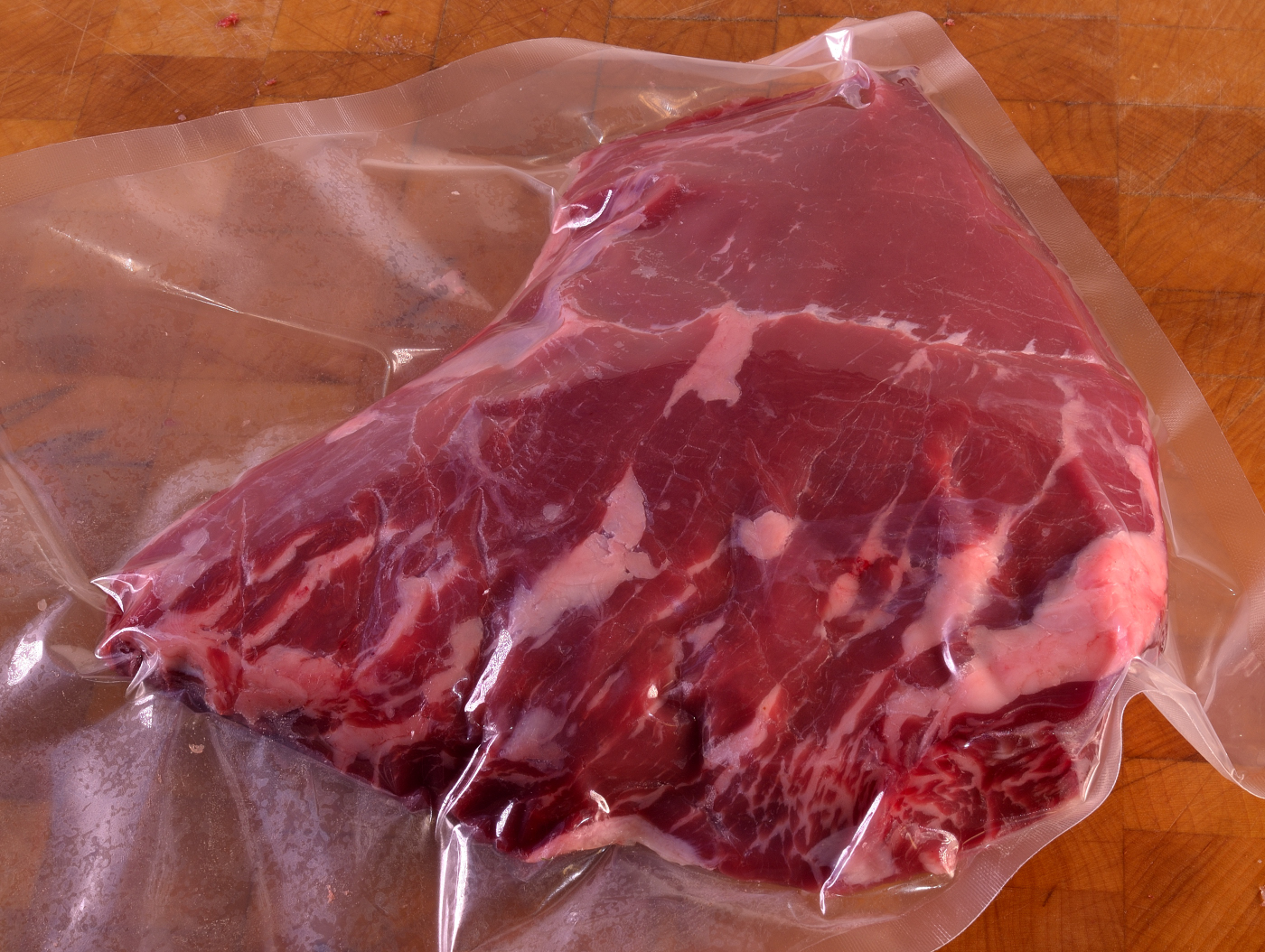
Again, approximately 3 lbs./1.4Kg of usable trim–a little too fatty for hamburgers but great for making Bolognese sauce or even “Sloppy Joes.” Make sure to drain the cooked ground beef after rendering. The darkened pellicle was used to make an updated version of Espagnole/Demi-glace.
Visit HERE and HERE for top sirloin recipes.
Norm King
Visit us live on Facebook at SVR–Sous Vide Resources; Low Temperature Pasteurization, Sous-B-Q™, | Facebook

